Intel for Intercessors: the Supreme Court Justices
President Trump’s Foreign Film Tariff
Rep. Introduces Bill to Protect Military Chaplains
Health Officials Share Vision for Making America Healthy Again
Planned Parenthood Is Giving Sex-Change Meds to Minors
Intel for Intercessors: the Supreme Court Justices
This year, the Supreme Court is deciding many issues that will have major impacts on our country and its citizens. For instance, cases to be decided include: a state’s right to ban transgender care for minors, parental rights in schools, executive power vs. judicial power, deportations, birthright citizenship, and many others.
Become a Monthly Ministry Partner today.
The Justices’ decisions have often negatively upended the country in ways our Founders could never have imagined. Here are just a few cases. There are many more.
Helvering v. Davis (1937) upheld the constitutionality of Social Security and unleashed Congress to spend taxpayer money on whatever it wants and NOT just what the Constitution expressly says it can.
Engel v. Vitale (1962) ended prayer in public schools, citing it as a violation of the First Amendment;
Roe v. Wade (1973) made abortion legal
Obergefell V. Hodges (2015) made same-sex marriages legal
Dobbs V. Jackson (2022) overturned Roe and returned abortion to the states.
As intercessors, our prayers for Supreme Court decisions are always that justices will seek God’s wisdom in their deliberations and discern the will of God.
“Judicial Power” According to the Constitution
Article III, Section 1 of the Constitution establishes… “The judicial power of the United States, shall be vested in one Supreme Court, and in such inferior courts as the Congress may from time to time ordain and establish.” Section 2 describes the cases they can decide.
In Marbury v. Madison 1803, the Supreme Court established the principle of judicial review and gave itself the power to decide if laws and actions by the Congress and the Executive branch are constitutional. Basically, this case declared that the Supreme Court is the ultimate authority on the Constitution – a power not actually given to the Court in the Constitution. However, after 220 years of practice, the country is used to the Court’s power of judicial review.
Supreme Court Justices are nominated by the President of the United States and confirmed by the Senate. The Chief Justice of the Court is chosen by the President.
Justices of the Supreme Court are known as Associate Justices, and their seniority is based on the date they are sworn into Office. The Chief Justice is considered the most senior justice regardless of the date they were sworn in. The eight Associate Justices are seated on the bench in order of seniority.
The Senior Associate Justice is called upon to carry out the Chief Justice’s duties if the Chief Justice is unable to do so, or if he resigns or dies in office, and a replacement is confirmed. When the Justices are deciding a case, they meet together in person. Traditionally, votes are taken in order of seniority. The eight Associate Justices are seated on the bench in order of seniority.
Justices Currently Serving on the Supreme Court:
Chief Justice John Roberts
Nominated by: President George W. Bush
Confirmed: September 29, 2005, 78-22
Education: Harvard College, ’76; Harvard Law, ’79
Age: 70
Justice Roberts’ early legal career was as a clerk for Justice William Rehnquist. From 1982 to 1993, he served in various positions in the Reagan/Bush administrations as Special Assistant to the Attorney General, Associate Counsel to the President, and Deputy Solicitor General. During the Clinton years, Roberts returned to private practice, arguing 39 cases before the Supreme Court. In 2003, he was confirmed to the U.S. Court of Appeals for the District of Columbia. In 2005, President George W. Bush nominated Roberts to the Supreme Court. While the nomination was pending, Chief Justice Rehnquist passed away, and Bush nominated Roberts to replace Rehnquist as Chief Justice.
John Roberts is married with two children. His biographer, Joan Biskupic, claims there are two sides to Justice Roberts, and they are often in competition. One is his conservative side, and the other is his institutional side with a desire to preserve the legitimacy of the Supreme Court. In Roberts’ view, “contentious decisions about polarizing issues damage the legitimacy of the Supreme Court in the public eye.”
Chief Justice Roberts is facing a lawsuit filed against him in his role as the official head of the U.S. Judicial Conference and the Administrative Office of the U.S. Courts. The lawsuit was filed by America First Legal Foundation (AFL), headed by Stephen Miller, White House Deputy Chief of Staff. The lawsuit claims these offices are acting as rogue executive agencies in cahoots with Senator Sheldon Whitehouse and Rep. Hank Johnson to wage lawfare against conservative Supreme Court Justices. AFL had filed Freedom of Information Requests for the communication between the Judicial Conference and the liberal lawmakers. When the Conference refused, AFL filed the lawsuit claiming these executive agencies should be overseen by the president and not the courts.
Senior Associate Justice Clarence Thomas
Nominated by: President George H.W. Bush
Confirmed: October 23, 1999, 52-48
Education: College of the Holy Cross, ’71; Yale Law, ’79
Age: 77
After law school, Justice Thomas worked as the Assistant Attorney General in Missouri. In 1979, he became a legislative assistant for the Senate Commerce Committee, then joined President Reagan’s administration in 1981, working in the Department of Education, and later as chairman of the Equal Employment Opportunity Commission. In 1989, President George H.W. Bush nominated Thomas for a seat on the U.S. Court of Appeals for the District of Columbia. In 1991, Justice Thomas was confirmed by the Senate to the Supreme Court.
Justice Thomas was born in 1948 in Georgia. His father left when he was two years old. Thomas went to live with his mother’s father, whom he considers his most influential role model. Thomas’s dream was to become a Catholic priest. At sixteen, he went to a Catholic boarding school. He was the first black student admitted and endured severe racial bullying at the school. After Martin Luther King’s assassination, Thomas gave up his dream of becoming a priest and turned to civil rights. He attended Yale Law School, where he was one of the early black students of affirmative action. But he now opposes affirmative action, when he came to believe his accomplishments are not ascribed to his hard work, but to the color of his skin.
Justice Thomas underwent a grueling confirmation hearing as he was accused of sexual harassment by a former female employee. He denied the accusations, and the FBI could find nothing conclusive. Thomas in a passionate speech before the judiciary committee called the proceeding “a high-tech lynching for uppity-blacks who in any way deign to think for themselves, to do for themselves, to have different ideas”, a clear reference to his conservative opinions which are out of step with the left’s identity politics. He is considered a constitutional originalist and is married to Virginia Thomas.
Associate Justice Samuel Alito
Nominated by: President George W. Bush
Confirmed: January 31, 2006, 58-42
Education: Princeton, ’71; Yale Law, ’75
Age: 75
Justice Alito began his legal career as an Assistant U.S. Attorney in New Jersey, later becoming the U.S. Attorney for New Jersey. He argued 12 cases before the Supreme Court. In 1990, President George H.W. Bush nominated Alito to a seat on the U.S. Court of Appeals for the Third Circuit, and confirmed unanimously. In 2005, President George W. Bush nominated Alito to the Supreme Court.
Justice Alito considers himself a “practical originalist” regarding the Constitution and is a reliable member of the conservative bloc. He wrote the majority opinion in the Dobbs case, overturning Roe v. Wade. The critical question in Dobbs is whether the Constitution, as “properly understood,” confers a right to obtain an abortion. The Court said the Constitution makes no reference to abortion, and further established that “abortion is not deeply rooted in the Nation’s history and tradition,” and “not part of a broader entrenched right.” Justice Alito is married with two children.
Associate Justice Sonia Sotomayor
Nominated by: President Barack Obama
Confirmed: August 8, 2009, 68-31
Education: Princeton, ’76; Yale Law, ’79
Age: 70
Following graduation from Yale, Justice Sotomayor served as an Assistant District Attorney for New York County. She then went into private practice, and in 1992, she was confirmed to a seat on the U.S. District Court for the Southern District of New York. In 1997, she was confirmed to the United States Court of Appeals for the 2nd Circuit. In 2009, she was confirmed to the Supreme Court.
Justice Sotomayor is the first Hispanic to serve on the Supreme Court. She grew up in the Puerto Rican neighborhoods of Bronx, New York. During her confirmation hearing, she famously said, “I would hope that a wise Latina woman with the richness of her experiences would more often than not reach a better conclusion than a white male who hasn’t lived that life.” Justice Sotomayor is a reliable fixture of the liberal wing of the Court. She is known for her outspokenness in oral arguments and her passionate dissenting opinions on Court rulings involving issues of race, gender, and ethnic identity. She is divorced.
Associate Justice Elena Kagan
Nominated by: President Barack Obama
Confirmed: August 7, 2010, 63-37
Education: Princeton, ’81; Oxford, ’83, Harvard Law, ’86
Age: 65
Justice Kagan clerked for Justice Thurgood Marshall, then entered private practice. In 1991, she joined the faculty at the University of Chicago Law School. She worked in the Clinton administration as Associate White House Counsel from 1995 to 1999, when she left to teach at Harvard Law School, becoming Harvard Law’s first woman dean in 2005. In 2009, she became the first female U.S. Solicitor General and in 2010 was confirmed as a Supreme Court Justice.
In high school, Justice Kagan served as Student Government President. Prior to her nomination to the Supreme Court, Kagan had no judicial experience, unlike the other justices. Her opinion writing is scarce. Kagan is a big fan of comic books and once cited a Spider-Man comic book in one of her rare majority opinions. Even though in her confirmation hearing she stated that same-sex marriage was not a constitutional right, she voted in the majority in Obergefell legalizing same-sex marriage. She often votes with her fellow liberal females in the court. Justice Kagan is Jewish and has never married.
Associate Justice Neil Gorsuch
Nominated by: President Donald J. Trump
Confirmed: April 10, 2017, 54-45
Education: Columbia, ’88; Harvard Law, ’91, Oxford, 2004
Age: 57
Justice Gorsuch clerked for two Supreme Court Justices – Justice Byron White and Justice Anthony Kennedy. Gorsuch was in private practice from 1995 to 2005. He received a doctorate from Oxford University in 2004. In 2005, he joined the Bush Administration as the Deputy Associate Attorney General. In 2006, President Bush nominated him to the U.S. Court of Appeals for the 10th Circuit. In 2017, President Trump nominated him to the Supreme Court to fill a vacancy left by the death of Justice Antonin Scalia the year before. The Senate, under Republican control, refused to take up the confirmation of Merrick Garland, President Obama’s pick, during the 2016 election year. Justice Gorsuch was later confirmed in April 2017.
Justice Gorsuch is a constitutional originalist, meaning he interprets the Constitution as the Founders drafted it. Gorsuch is not only a champion of constitutional originalism but also believes that legislative history and congressional intent are less important than the meaning of the actual words used in drafting the laws. In clashes between state power vs. the federal government, he tends to favor the states over the federal government. He was a classmate of Barack Obama at Harvard. Justice Gorsuch is married with two children and attends an Episcopal church.
Associate Justice Brett Kavanaugh
Nominated by: President Donald J. Trump
Confirmed: October 6, 2018, 50-48
Education: Yale, ’87; Yale Law, ’90
Age: 60
Justice Kavanaugh clerked for Justice Anthony Kennedy. Justice Kavanaugh then worked as Associate Counsel for the Office of the Independent Counsel, Kenneth Starr, participating in the Lewinsky investigation and drafting the recommendation for impeachment against President Bill Clinton. Afterward, he worked in private practice from 2001 to 2003 before taking the position of Senior Associate Counsel to President George W. Bush. Kavanaugh was confirmed to the U.S. Court of Appeals for the District of Columbia in 2006 and then sworn in to the Supreme Court in 2018.
Justice Kavanaugh was perhaps the victim of the most unseemly and corrupt confirmation hearings ever witnessed. A woman accused him of sexually assaulting her when they were teenagers in high school at a party, although no corroborating witnesses were ever found. The media had a field day, reporting any and all lewd fake stories, without bothering to ascertain the truth. It was a truly shameful episode of Congressional and media conduct. Kavanaugh denied every accusation. President Trump stood by him, and he was confirmed along party lines.
Once confirmed, Justice Kavanaugh was the first justice to hire an all-female team of clerks. He is married to Ashley and has two daughters. In June 2022, Justice Kavanaugh was a victim of a failed assassination plot after the Dobbs decision was leaked to the press. His home was also the site of angry protests over Dobbs. Kavanaugh is a Roman Catholic and regularly attends church.
Associate Justice Amy Coney Barrett
Nominated by: President Donald J. Trump
Confirmed: October 27, 2020, 52-48
Education: Rhodes College, ’94; Notre Dame Law, ’97
Age: 43
Justice Barrett clerked for Justice Antonin Scalia in the 1998 term, of whom she says, “his judicial philosophy is mine, too.” She practiced law for two years in D.C. before becoming a law professor at the Notre Dame Law School in 2002. President Trump appointed her to the U.S. Court of Appeals for the Seventh District in 2017 and then nominated her in 2020 for the U.S. Supreme Court when Ruth Bader Ginsburg unexpectedly died. She was sworn in just days before the 2020 election, in a party-line vote.
Justice Barrett is married with seven children, two of whom they adopted from Haiti, and one of whom has Down Syndrome. She and her husband are conservative Catholics. While a professor at Notre Dame, Justice Barrett was a member of the Faculty for Life. During her confirmation hearing, liberals expressed concern that she would be influenced by her religious beliefs, especially regarding abortion, and they strenuously opposed her confirmation.
In her tenure so far, she has surprised the right by voting with the three liberal female justices. But, she cast the deciding vote to overturn Roe v. Wade, and has consistently voted with her conservative colleagues on cases involving religious freedom, capital punishment, and affirmative action.
Associate Justice Ketanji Brown Jackson
Nominated by: President Joseph Biden
Confirmed: June 30, 2022, 53-47
Education: Harvard, ’92; Harvard Law, ’96
Age: 54
Justice Jackson clerked for a number of judges, including Justice Stephen Breyer. She then worked in private law firms and as a federal public defender in D.C. from 2005 to 2007. She also worked off and on for the United States Sentencing Commission from 2003 to 2012. In 2013, she was confirmed to the U.S. District Court for the District of Columbia, where she served until 2021, when she was confirmed to the U.S. Court of Appeals for the District of Columbia. She was confirmed to the Supreme Court in 2022.
Justice Jackson is the first black female to serve on the Supreme Court and is considered part of the three female liberal wing. Joe Biden pledged in the 2020 presidential election that he would appoint a black woman to the Supreme Court, with many considering her a “DEI hire.” Justice Jackson dissented in the Students for Fair Admission case ending affirmative action, calling the decision a “tragedy for us all.” She is popular with liberal legal activists who say she is “willing to engage in ideological combat with the court’s conservatives.” Justice Jackson is married with two children.
Let Us Pray for the Supreme Court Justices
Heavenly Father, in Jesus’s name, we lift up the nine Justices of the Supreme Court. May each justice judge fairly and rule wisely. May their decisions be based on Your righteousness and justice. May they always seek to do Your will and not be swayed or intimidated by activists who seek to do evil,
We ask that each justice defends the Constitution and would not seek to write law from the bench. Let each seek Your face and Your will as they deliberate. May they rule as You would want them to rule.
We ask that You search their hearts and if there is any wicked way in them, drive the wickedness out. Convict them of all unrighteousness and may they let go of any unholy or personal preferences so they may bring true justice to the nation.
We ask that you protect the justices from all harm, from any threats or violence from those that hate You, from any spiritual attacks of the enemy, and from any sickness or illness of body and mind.
Father, draw every justice closer to you. We ask for divine revelation of your son Jesus, if they do not yet know Him. May each justice accept Him as Lord and Savior. Reveal to them Your true justice and that it is Your Son, Jesus, who is our Supreme Judge. And He commanded us to preach to the people, and to testify that it is He who was ordained by God to be Judge of the living and the dead. (Acts 10:42)
In Jesus Name, Amen.
Add your own prayers for the Supreme Court below.
Belinda Brewster analyzes cultural, political, and world events from a biblical worldview. Belinda’s passion is to equip, support, and encourage parents and grandparents who are courageously battling against the spiritual and cultural forces impacting children and grandchildren. Photo Credit: Melina Mara – Pool/Getty Images.
Partner with Us
Intercessors for America is the trusted resource for millions of people across the United States committed to praying for our nation. If you have benefited from IFA's resources and community, please consider joining us as a monthly support partner. As a 501(c)3 organization, it's through your support that all this possible.

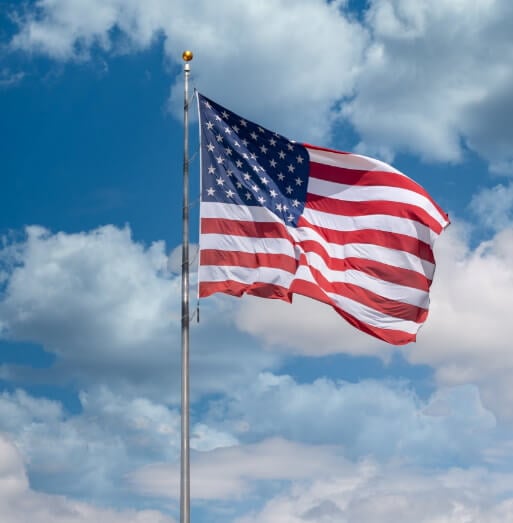
We use cookies to ensure that we give you the best experience on our website. If you continue to use this site we will assume that you are happy with it. Privacy Policy
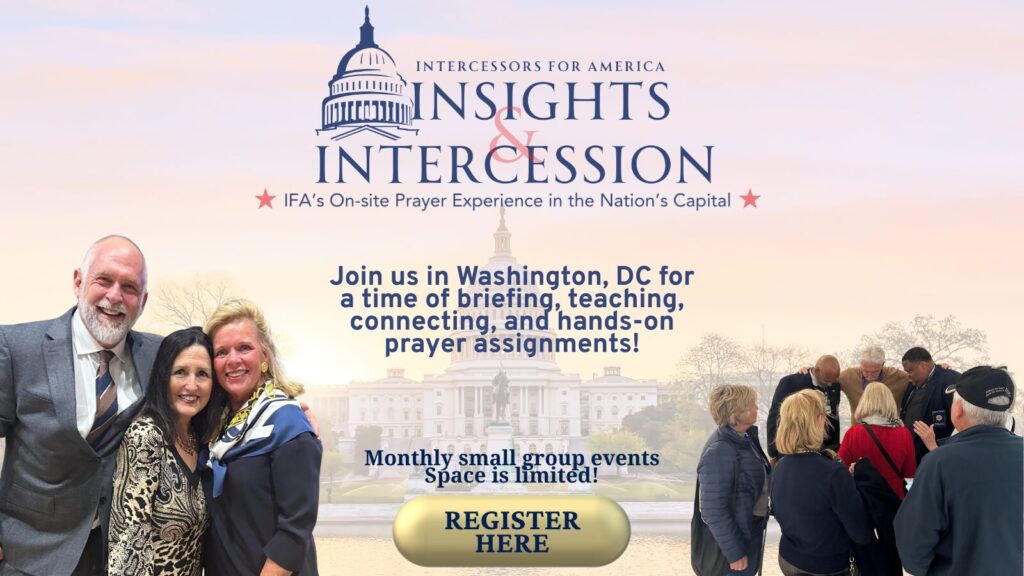
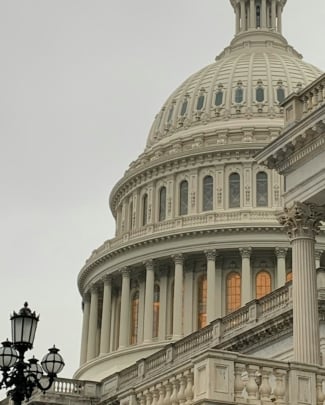
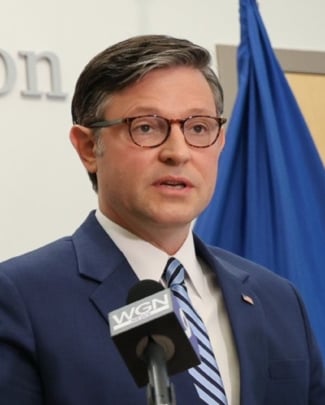
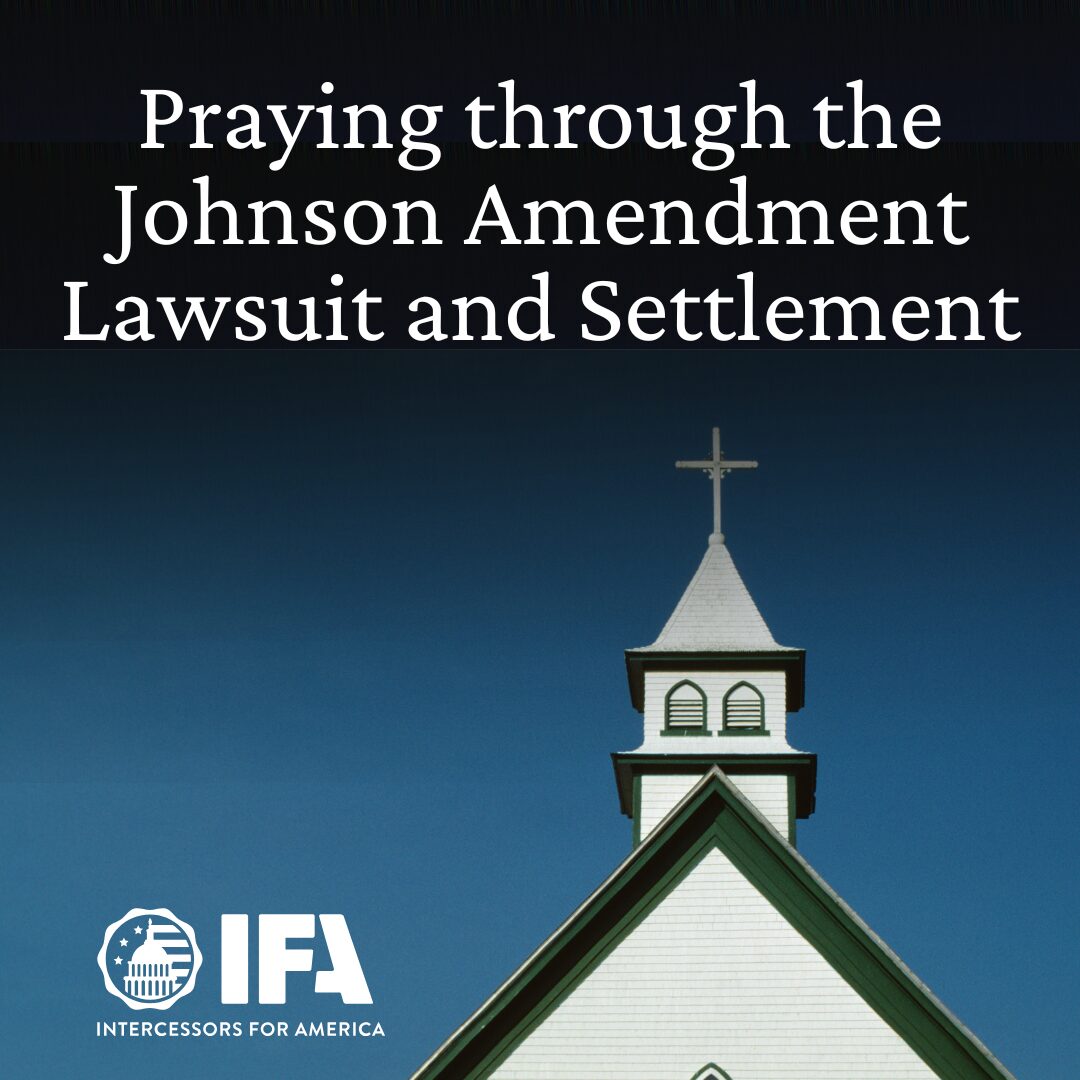

Comments
I believe that, we the people, are starting to lose our confidence in this United States Supreme Court. They are placed on this very special Bench to work and make decisions based wholly on the Constitution and put aside their own political beliefs and, under God, their decisions be based. This is not happening in this highest Court of the United States..
Therefore, I believe there should be term limits on these Justices just as they are on all other areas of Government.
I trust in God only. He is the righteous judge and has the final say everything. I have no faith in the three literal judges. I feel they have sold out to satan and all things evil. No human can come close to God’s wisdom and that’s why all judges should pray for God’s guidance.
🙏😇🙏
I am in agreement with that prayer in Jesus name so be it.
May you Jesus be glorified and lifted up in all our Supreme Court justices.
DEAR LORD GOD
PLEASE CLEAN UP THE SUPREME COURT OF ALL CORRUPTION AND CONFLICTS OF INTEREST.
I ASK IN JESUS’NAME
AMEN
While we should pray for these Justices as we should pray for all of our Government you should understand that their job is to interpret the Constitution and law. That begins with Congress and the President. I recently read an interview with Roberts who said that.
Praying in agreement for the Supreme Court Justices!
For President Trumps trip to the Middle East. Wisdom and discerment in his thoughts and Speech.
For the Big Pharmaceuticals to come into alignment with the President’s Executive orders.
In Yeshuas Name
Dear Gracious Lord, We pray for America due to we’re living in a spiritual warfare era and our Judicial system is Out of Control. We ask you to guide the Supreme Court Justices, as well as the local court justices. Grant them Common Sense, Wisdom and Righteousness. Lead them to Do Your will, not evil’s will and make the right decisions. In Jesus name. Amen
Thank you for the excellent intel, Belinda. It informs my prayers and intercession.
YHVH, we pray that righteousness and justice, the foundations of Your throne, would prevail in our Supreme Court, and in the personal lives of each Justice. We ask that You draw each one of them into intimate relationship with You through faith in Your Son Yeshua’s atoning sacrifice, and walking with You in obedience. May they recognize their responsibility to You in judging righteously.
Great article and prayer! I am praying in agreement!
Excellent and informative article. Thank you for this summary. This helps me know how to pray more succinctly for each one. And, I do. Father, no one sits in places of authority unless You allow them or appoint them. As each Justice considers each case, would You please speak to their hearts and minds as to what is right in Your sight? Some need courage and boldness to stand with You rather than men. I thank You for each of them. May each one bring glory to Your Name. Amen.